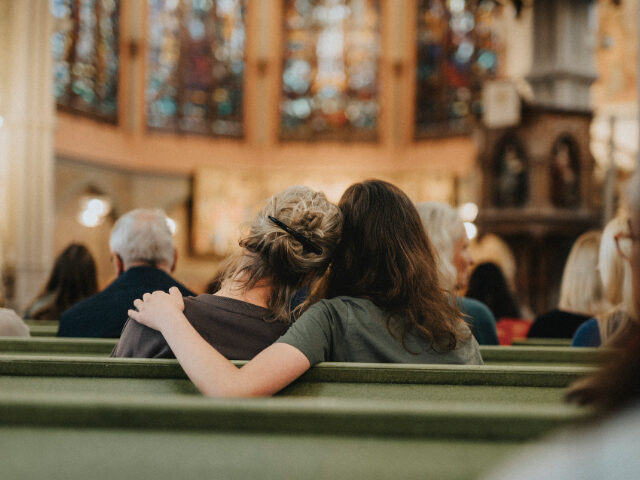The past several years have reflected an overall decline in religious service attendance among Americans, according to data from Gallup.
Between 2021 and 2023, 30 percent of Americans said they attended religious services every week (21 percent) or almost every week (nine percent). At the same time, only 11 percent reported attending once a month, and 56 percent said they seldom (25 percent) or never (31 percent) attended.
“Two decades ago, an average of 42 percent of U.S. adults attended religious services every week or nearly every week. A decade ago, the figure fell to 38 percent, and it is currently at 30 percent,” Gallup Senior Editor Jeffrey Jones wrote. “This decline is largely driven by the increase in the percentage of Americans with no religious affiliation — 9 percent in 2000-2003 versus 21 percent in 2021-2023 — almost all of whom do not attend services regularly.”
Among major religious groups in the United States, members of the Mormon Church reported being the most observant, with 67 percent saying they attended church weekly or nearly weekly.
“Protestants (including nondenominational Christians) rank second, with 44 percent attending services regularly, followed by Muslims (38 percent) and Catholics (33 percent),” according to the survey.
“Majorities of Jewish, Orthodox, Buddhist and Hindu Americans say they seldom or never attend religious services,” the report continues. “Twenty-six percent of Orthodox adults, 22 percent of Jewish adults, 14 percent of Buddhist adults and 13 percent of Hindu adults attend services regularly.”
Those with no religious affiliation, including those who identify as agnostic or atheist, are unlikely to attend religious services, although three percent say they attend weekly or nearly weekly.
Among various religious groups, Catholics have shown one of the largest drops in attendance between 2000 and 2023, 45 percent to 33 percent. The survey found slightly smaller decreases among Orthodox (nine percentage points) and Hindus (eight percentage points).
The group with the largest drop in that time frame are those who identify with “other” religious groups, “generally those not large enough to report separately as their own group or those that are difficult to categorize based on respondents’ answers,” Jones wrote. This group saw a 24-point decline in two decades.
In contrast, Muslim and Jewish Americans “have shown slight increases in religious service attendance over the past two decades,” according to the survey report.
Muslim adults who regularly attend mosque was up to 34 percent between 2021 and 2023 compared to 34 percent between 2000 and 2003. However, the most recent percentage is lower than 46 percent between 2011 and 2013.
Jewish Americans have also been increasingly attending synagogue, from 15 percent two decades ago to 19 percent and 22 percent between 2021 and 2023, respectively.
Jones projected that church attendance “will likely continue to decline in the future, given younger American’s weaker attachments to religion.”
“Specifically, more 18- to 29-year-olds, 35 percent, say they have no religious preference than identify with any specific faith, such as Protestant/nondenominational Christian (32 percent) or Catholic (19 percent),” Jones wrote. “Additionally, young adults, both those with and without a religious preference, are much less likely to attend religious services — 22 percent attend regularly, eight points below the national average.”
Other polls in recent years have found that Americans perceive a decrease in religious influence in the United States and place less value on their children sharing their religious views. Recently, the Pew Research Center found that 80 percent of U.S. adults say religion’s role in American life is shrinking — “a percentage that’s as high as it’s ever been.”
Results for the Gallup poll are based on telephone interviews conducted between 2021 and 2023 with 32,445 U.S. adults. The margin of sampling error is ± one percentage point at the 95 percent confidence level.
Katherine Hamilton is a political reporter for Breitbart News. You can follow her on X @thekat_hamilton.

COMMENTS
Please let us know if you're having issues with commenting.